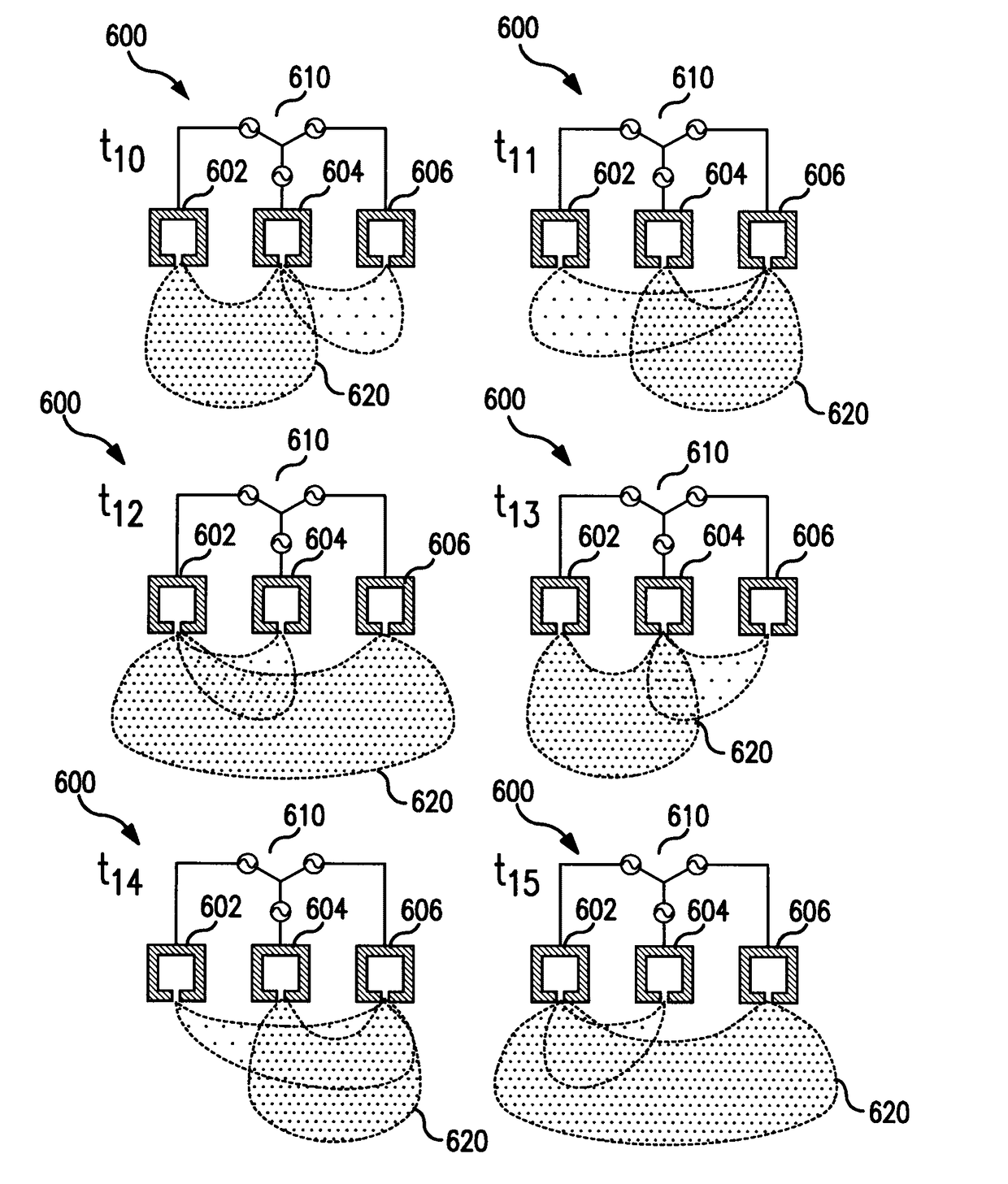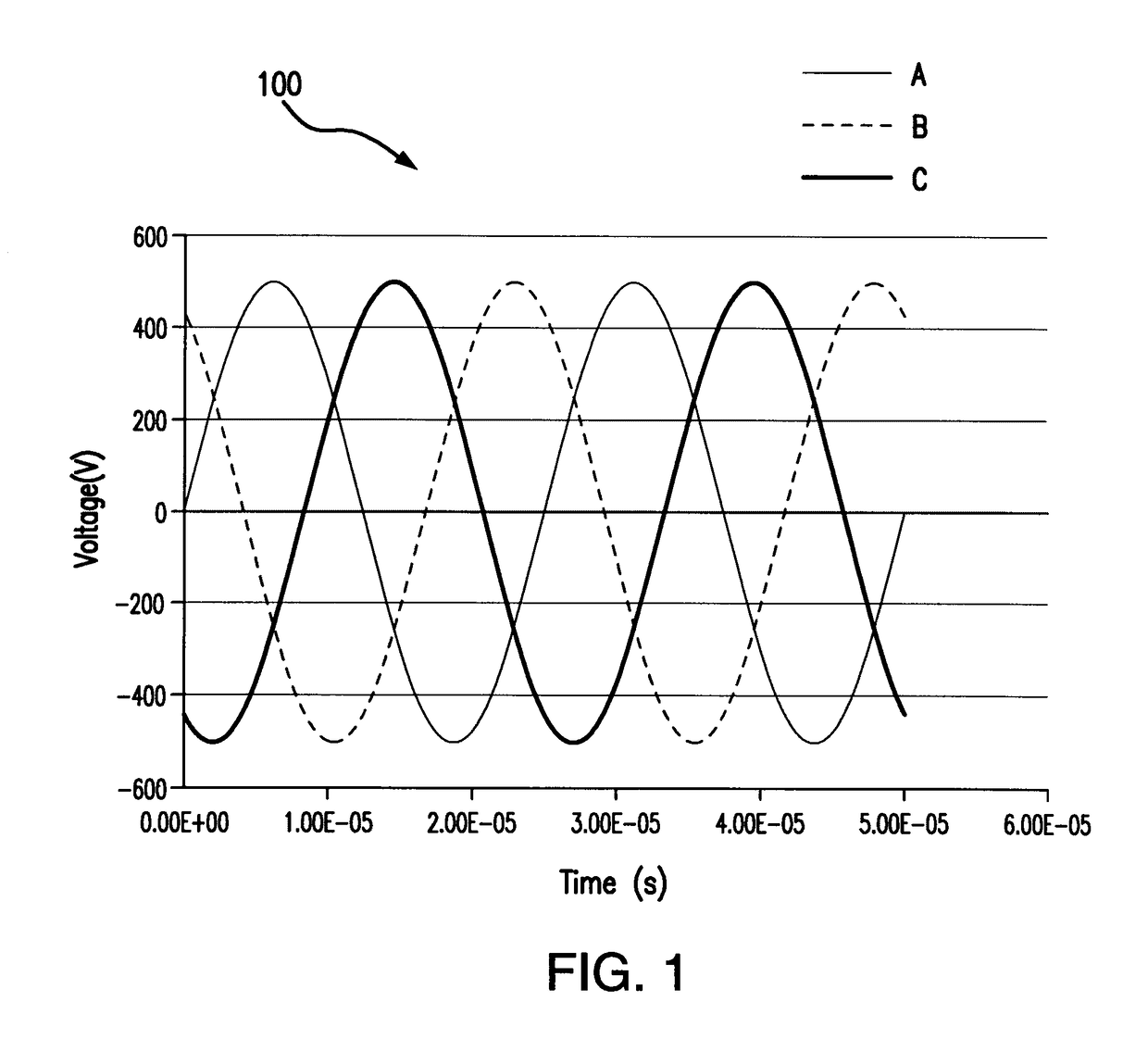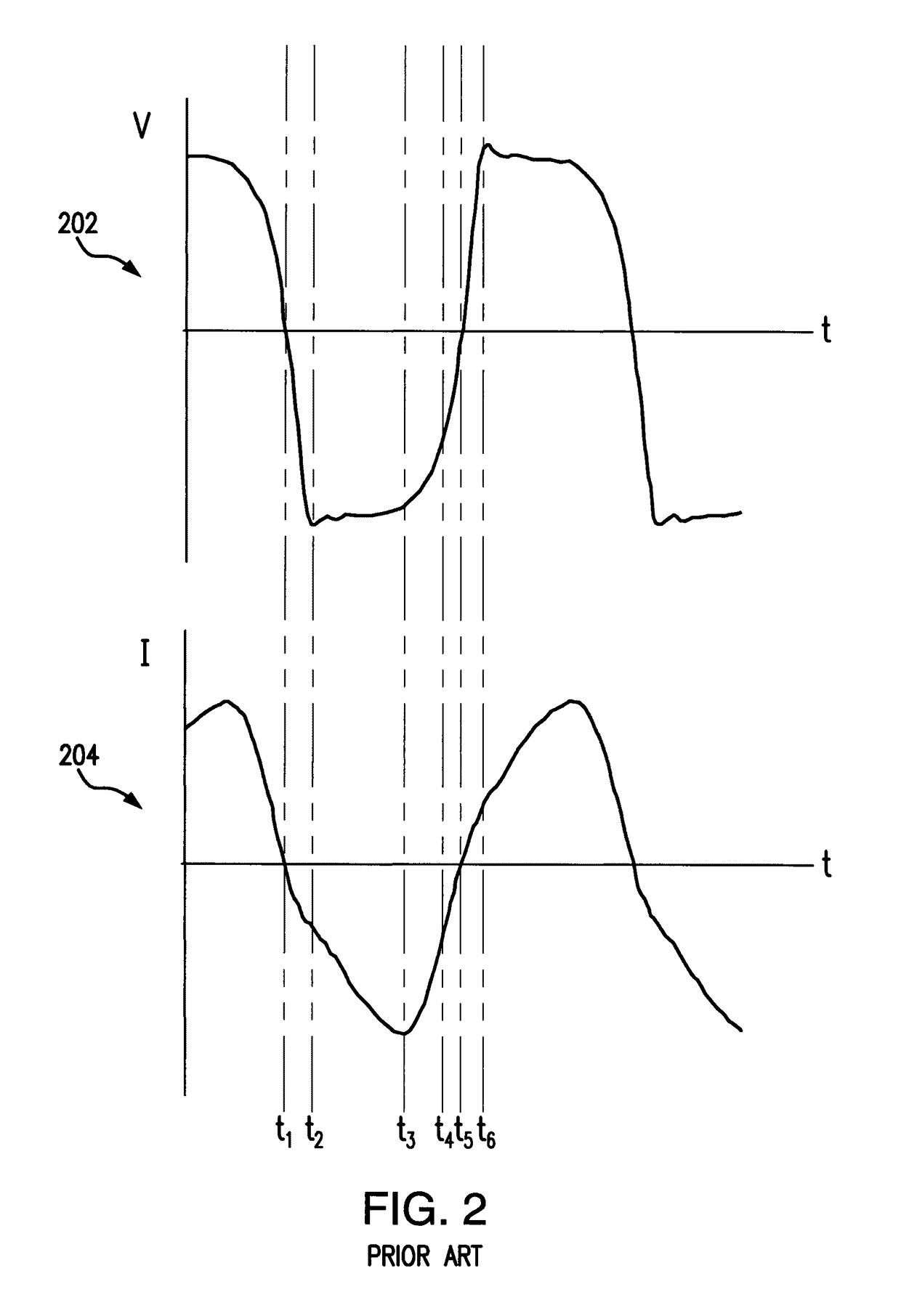Method of producing plasma by multiple-phase alternating or pulsed electrical current
a plasma and electrical current technology, applied in the direction of electric discharge tubes, chemical vapor deposition coatings, coatings, etc., can solve the problems of unfavorable plasma generation of plasma, inability to use linear hollow cathodes, and degree of uniformity in hollow cathodes, so as to improve the time of active plasma generation, improve the deposition rate, and improve the operational life of the plasma source
- Summary
- Abstract
- Description
- Claims
- Application Information
AI Technical Summary
Benefits of technology
Problems solved by technology
Method used
Image
Examples
Embodiment Construction
[0035]Consider a sine wave A sin 2πft+φ, where A is the amplitude, f is the frequency, and φ is the phase angle. The phase angle φ specifies where the oscillation is at time t=0. With respect to two sine waves A1 sin 2πft+φ1 and A2 sin 2πft+φ2, the phase difference between the two waves is defined as the difference of phase angles φ2−φ1. Note that this definition makes the phase difference depend on which wave is considered the first wave and which wave is considered the second wave. That is, if the order is changed, the sign of the phase difference will change. The wave that has a larger phase angle is said to be the leading wave, and the wave with a smaller phase angle is said to be the lagging wave. If the leading wave is considered to be the first wave, and the phase difference is φ, then considering the lagging wave as the first wave will lead to a phase difference of −φ. Generally this specification will not treat the sign of the phase difference with much significance, and wi...
PUM
| Property | Measurement | Unit |
|---|---|---|
| phase angle | aaaaa | aaaaa |
| phase angle | aaaaa | aaaaa |
| electric potential | aaaaa | aaaaa |
Abstract
Description
Claims
Application Information
 Login to View More
Login to View More - R&D
- Intellectual Property
- Life Sciences
- Materials
- Tech Scout
- Unparalleled Data Quality
- Higher Quality Content
- 60% Fewer Hallucinations
Browse by: Latest US Patents, China's latest patents, Technical Efficacy Thesaurus, Application Domain, Technology Topic, Popular Technical Reports.
© 2025 PatSnap. All rights reserved.Legal|Privacy policy|Modern Slavery Act Transparency Statement|Sitemap|About US| Contact US: help@patsnap.com



